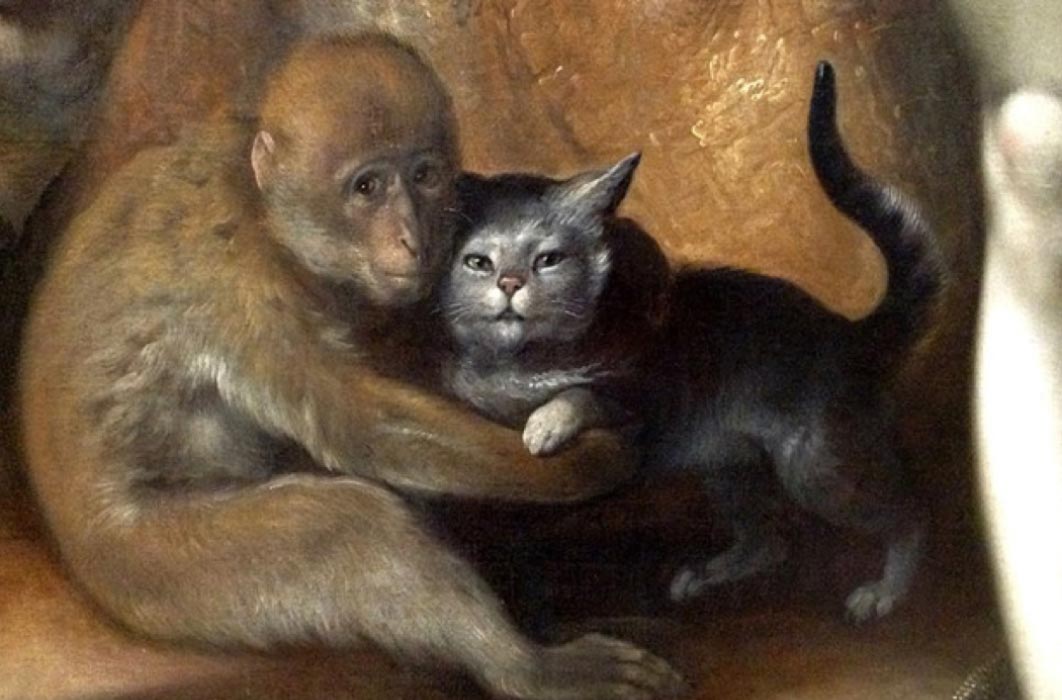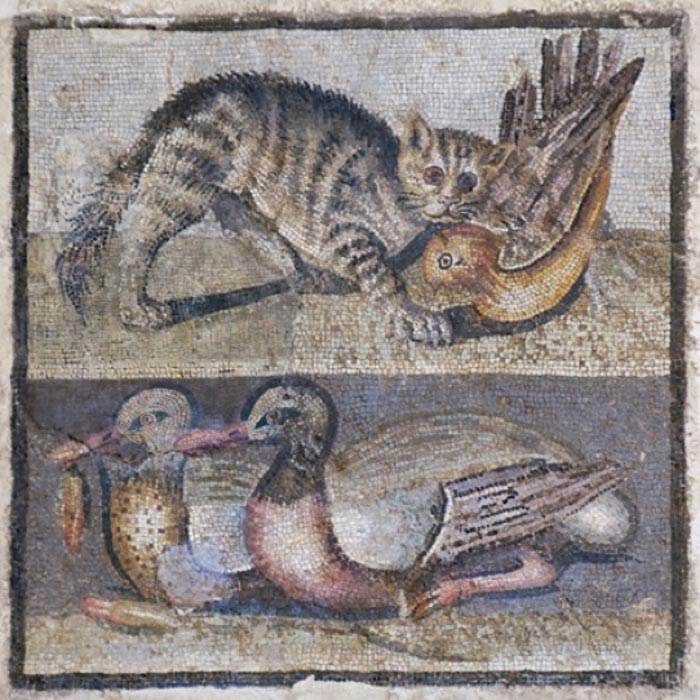
From Food to Friend: Prehistoric Exotic and Pampered Pets
Anthropologists and archaeologists are still working on compiling the human-pet timeline, but it is known pets have been adopted by humans for possibly tens of thousands of years. Americans keep about 78 million dogs, 85 million cats, 14 million birds, 12 million small mammals and nine million reptiles, according to a 2016 article by scholar Alicia Ault published in Smithsonian magazine, but when did humans first begin regarding animals as friends rather than foe or food?

Palazzo Massimo alle Terme. Central panel of a floor mosaic with a pet cat and two ducks. First century BC. From the triclinium of a suburban villa in the Cecchignola area. (Public Domain)
Origins of Animal Domestication
Dr Greger Larson, director of the University of Oxford’s palaeogenomics and bio-archaeology research network, leads a major international project to determine the origins of early animal domestication and especially when and how the human-animal bond developed. According to Larson’s paper published on Palaeobarn, decades of archaeological and genetic research failed to reveal: “where and how many times dogs were domesticated” and the new project is aimed to scour the archaeological and genetic records for evidence, as the team of scientists claim the animal-human relationship contributes much to the evolution of human society.
Chickens, pigs, sheep and cows are all domestic animals, yet seldom do these animals become pets, and not all tame animals: lions, tigers and rhinos are domesticated. The primary difference between a domestic animal and a pet is that the latter has been tamed and domesticated for pleasure, but while the domestic animal has also been tamed, it is kept by humans as a resource generator for food and work, that may or may not give pleasure.

The Greek philosopher Diogenes (404-323 BC) and his dogs which were emblematic of his “Cynic” dog-like philosophy which emphasized an austere existence. (CC BY-SA 3.0)
Nonlinear Evolution of Pets
According to Dr Larson the history of animal domestication and the rise of pets, “is not a linear progression from wild to domestic” and covers more on how animals have adapted to different roles in human society. Asking when the first pet came into being is a bit like asking when did life begin, however, one thing certain according to Dr Larson and his team is that dogs were the first domestic animal that were tamed and used for hunting and for their fur and meat, but it is still unknown if dogs were the first pets.
- 2,000-Year-Old Ancient Egyptian Cemetery Containing Dozens of Pets Unearthed in Berenike
- 2,000-Year-Old Dog Burials in Siberia Reveal Relationship Between Ancient People and Their Pets
- After 2000 Years of Harmony, the Maya May Soon Lose their Stingless Bee Pets
One of the team of scientists participating in the project, Mietje Germonpre, of the Royal Belgian Institute of Natural Sciences, published a paper in 2012 demonstrating that a 32,000-year-old canine-like skull found in a cave in Belgium was possibly the first pet dog pushing back the date for when dogs first became ‘man’s best friend’. Larson and his colleagues recently published evidence that dogs were domesticated twice, the first time being in Europe about 16,000 years ago and then in Asia some 14,000 years ago from two distinctly separate wolf lineages.





